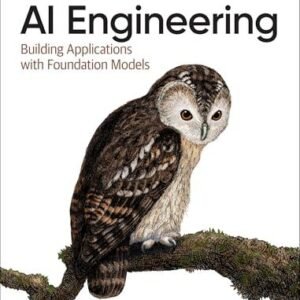In a world that often feels divided by barriers—be they physical, social, or economic—there lies a shimmering thread of hope woven through the advancements of technology: artificial intelligence. It’s easy to view AI with trepidation, conjuring images of cold machines and complex algorithms that threaten our humanity. Yet, beneath the surface, AI is emerging as a powerful ally in the fight for social inclusion and accessibility, illuminating the path toward a more inclusive reality for everyone. Imagine a world where individuals with disabilities can navigate their surroundings with ease, where language and cultural differences melt away, and where everyone has an equal opportunity to thrive. This is not a distant dream; it is a burgeoning reality powered by the innovations of AI. As we embark on this journey of discovery, let us embrace the possibilities that lie ahead, for in AI we find the tools to bridge gaps and build a society where no one is left behind. Join us as we explore the transformative potential of AI and celebrate the voices, stories, and advancements paving the way for a more compassionate and accessible world.
Table of Contents
- Unlocking New Possibilities: How AI Can Transform Accessibility for Everyone
- Fostering Connections: Using AI to Bridge the Gap in Social Inclusion
- Empowering Voices: Real Stories of Impact Through AI-Driven Solutions
- Building a Future Together: Recommendations for Integrating AI with Compassion and Purpose
- Future Outlook
Unlocking New Possibilities: How AI Can Transform Accessibility for Everyone
Artificial Intelligence is set to be a game-changer in the realm of accessibility, breaking down barriers that have long hindered individuals with disabilities. Through advanced technology, AI can create personalized experiences that cater to each user’s unique needs. Imagine voice-activated assistants that not only understand verbal commands but can also provide context-sensitive responses, making daily tasks easier and enhancing independence for those with visual impairments. The potential of AI extends to:
- Real-time captioning for the hearing impaired, allowing them to engage in conversations without hesitancy.
- Smart home systems that adapt to various physical abilities, enabling control over lighting, heating, and appliances.
- Navigation aids using augmented reality, helping those with cognitive disabilities to find their way in unfamiliar environments.
This technology can also foster greater social inclusion, bridging the gap between individuals and their communities. With AI’s ability to analyze vast amounts of data, services can be tailored specifically for an inclusive design, ensuring everyone has access to the same opportunities. For instance, educational platforms employing AI can provide individualized learning experiences for students with disabilities, enhancing their engagement and success rates. Take a look at some ways AI can elevate accessibility:
| Application | Impact |
|---|---|
| Speech Recognition Software | Empowers users to navigate technology through voice. |
| Predictive Text | Facilitates communication for individuals with motor difficulties. |
| Visual Recognition Systems | Aids those with visual impairments by identifying objects and people. |
Fostering Connections: Using AI to Bridge the Gap in Social Inclusion
In a world that often emphasizes differences, the potential of artificial intelligence to connect us is nothing short of revolutionary. AI technologies are emerging as powerful tools to dismantle barriers and enhance social inclusion. By leveraging machine learning and natural language processing, AI can tailor interactions to meet individual needs, helping those with disabilities or marginalized backgrounds feel seen and heard. Imagine platforms that translate spoken words into text in real-time for the hearing impaired or applications that adapt content to make it accessible for those with cognitive challenges. With AI, the possibilities for personalized inclusion are boundless.
The journey towards inclusivity through AI also involves creating communities that celebrate diversity and promote collaboration. This can manifest in various forms, including:
- Virtual support groups where individuals share their experiences and strategies.
- Online platforms that connect volunteers with those needing assistance or companionship.
- AI-driven advocacy tools that highlight underrepresented voices in decision-making processes.
By fostering these connections, we not only bridge the gap of social isolation but also amplify the rich tapestry of human experience, allowing everyone to contribute to and benefit from the collective strength of our communities. Together, we can create a future where technology serves as a unifying force, knitting together the diverse threads of society into a vibrant, inclusive fabric.
Empowering Voices: Real Stories of Impact Through AI-Driven Solutions
Across the globe, individuals are discovering new pathways to social inclusion through the transformative power of AI-driven solutions. Consider the inspiring story of Maria, a talented artist who, due to a physical disability, struggled to express her creativity. With the help of AI tools that convert spoken language into mesmerizing digital art, she not only found a voice but also a community. This technology has enabled her to share her work with the world, leading to recognition and collaborations that were once beyond her reach. Stories like Maria’s exemplify how technology can break barriers and elevate marginalized voices, allowing them to take centre stage.
Moreover, AI is redefining accessibility, making everyday tasks easier for those with diverse needs. Here are some remarkable innovations that are changing lives:
- Smart Captioning: Real-time captioning for those with hearing impairments, fostering seamless communication in public spaces.
- AI-Powered Navigation: Mobile apps that guide visually impaired users with audio cues, opening up the world like never before.
- Personalized Learning: AI-driven platforms that adapt to individual learning styles, empowering students with disabilities to thrive academically.
These advancements are not just technological feats; they represent a collective movement towards a more inclusive society. By harnessing the capabilities of AI, we are not only empowering individuals but also challenging stereotypes and reshaping the narrative around disability and inclusion.
Building a Future Together: Recommendations for Integrating AI with Compassion and Purpose
As we forge ahead in the age of artificial intelligence, it is essential to prioritize compassion and purpose in our initiatives. Building systems that are inclusive requires a deep understanding of the diverse needs of all individuals. This journey can be greatly enhanced by adopting the following approaches:
- Engage communities: Involve marginalized voices in the development process to ensure AI solutions reflect their unique experiences and challenges.
- Emphasize transparency: Make the inner workings of AI accessible to the public to foster trust and allow for constructive feedback.
- Promote ethical guidelines: Establish a framework for the ethical use of AI that prioritizes human dignity and rights above all else.
Furthermore, collaboration among technology developers, governmental bodies, and non-profit organizations can create a robust support system for social inclusion. A shared commitment to leveraging AI responsibly holds the promise of fostering environments where everyone can thrive. Organizations can consider:
| Action | Impact |
|---|---|
| Develop user-friendly interfaces | Enhances accessibility for individuals with varying abilities. |
| Provide ongoing education | Empowers people to utilize AI tools effectively, bridging the digital divide. |
Through these thoughtful recommendations, we can ensure that technological advancements enhance our collective human experience rather than detract from it. The integration of AI into our daily lives offers us a unique opportunity to build a more compassionate and equitable society.
Future Outlook
As we stand on the threshold of a new era defined by artificial intelligence, it’s crucial to embrace the profound potential it holds for social inclusion and accessibility. Imagine a world where technology, once seen as a barrier, becomes the bridge that connects us all—regardless of age, ability, or circumstance. AI is not just a tool; it’s a beacon of hope that can illuminate the paths for those who have long been in the shadows.
By harnessing the power of AI thoughtfully and compassionately, we can curate experiences that empower every individual, fostering environments where everyone has the opportunity to thrive. This journey is not just about the technology itself but about the hearts and lives it touches.
As we move forward, let’s commit to shaping a future where empathy drives innovation and where inclusivity is woven into the fabric of our digital landscape. Together, we can champion this change, ensuring that no one is left behind. So let us turn this hope into action; let us advocate for a more inclusive tomorrow that celebrates the beautiful diversity of our shared human experience.
The future is bright, and with each step we take in embracing AI for social good, we bring a little more light into the world. Let’s walk this path together—one of understanding, belonging, and endless possibilities. Thank you for joining us on this journey, and here’s to welcoming a new dawn of inclusion!





